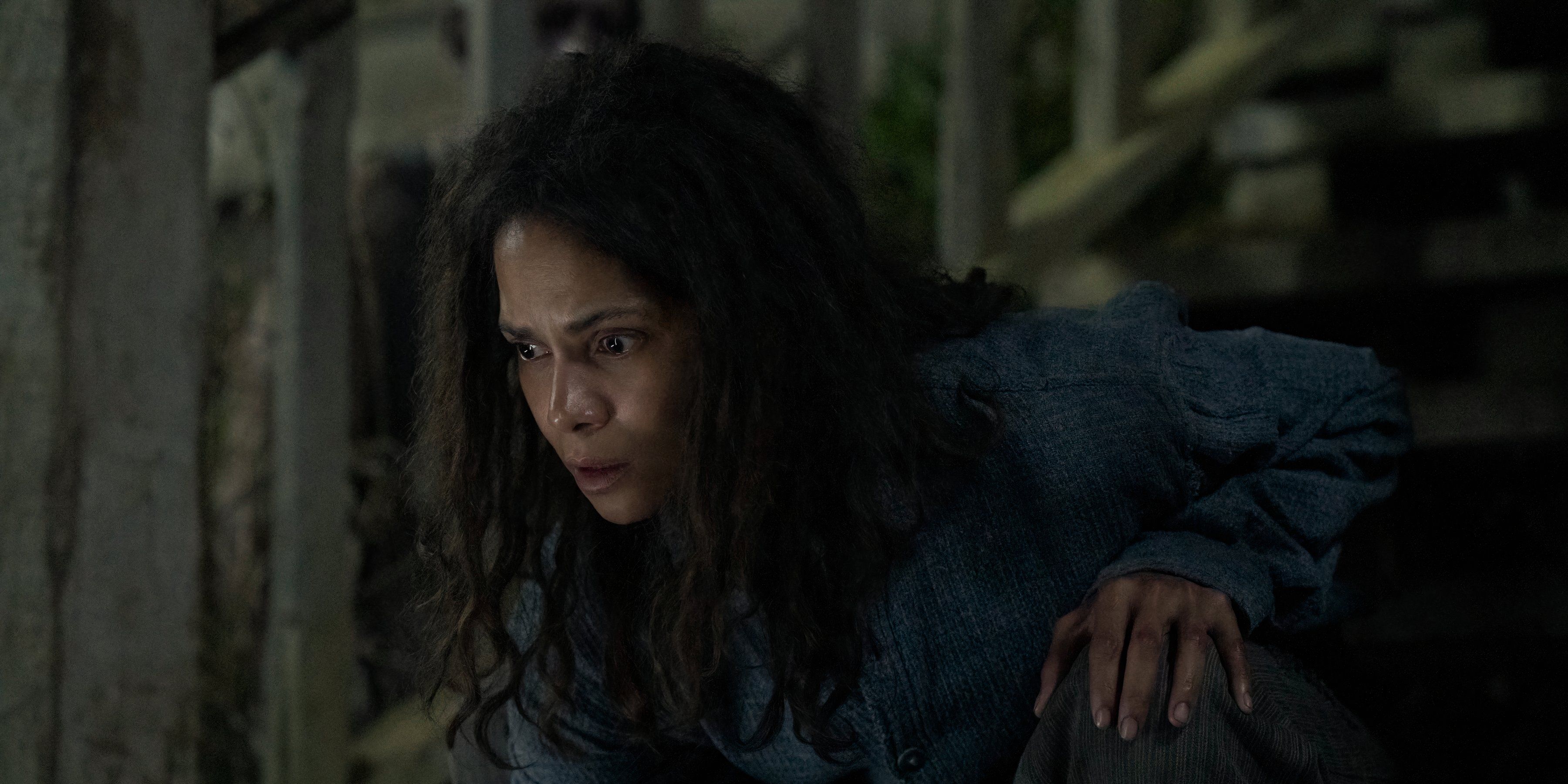Never Let Go
is the kind of film you have to go into knowing almost nothing about. Directed by Alexandra Aja from a screenplay by Kevin Coughlin and Ryan Grassby, the Halle Berry-led horror film is a study in patience. The film, largely set inside and around a home in the forest, successfully separates us and its characters from the outside world. This forces us to ponder its themes and setup, as well as the evil that lurks — real or perceived — just outside its door. The horror film has an engrossing premise that remains engaging even in its lulls.
Set in an unspecified future, Never Let Go follows the mother (Berry) of twin sons, Sam (Anthony B. Jenkins) and Nolan (Percy Daggs IV), and their secluded life in the woods. Berry’s character, whose name is never mentioned, is convinced there’s an evil that exists beyond the house and only her childhood home — and the wood it’s built from — can protect her family from it. Whenever any of the characters go out to hunt or chop wood, they’re tethered to their home by a long rope to prevent the evil from touching them.
Never Let Go Keeps Us Guessing
We’re often caught between believing there are sinister beings who take human form and can transfer their evil through touch, even if only Berry’s character can see them. With the family so isolated, the mind tricks and tension are heightened, and things get especially disturbing when Nolan starts to rebel against his mother’s wishes, throwing a wrench in the family dynamics. The film is less of a horror in that regard; it’s more of a psychological thriller that keeps us guessing.
The family drama is compelling as the mother grapples with her sons growing up and asking questions, and Never Let Go touches upon the themes of parental control and protection against a child’s push for independence.
Sure, there are quite a few bloodied figures who taunt Berry throughout the film, but the story is most gripping when it’s focused on the tensions affecting the familial relationships. The characters go through enough mental gymnastics to explain certain things, or, in the case of Nolan, poke holes in his mother’s reasoning, to keep us on edge. The family drama is compelling as the mother grapples with her sons growing up and asking questions, and Never Let Go touches upon the themes of parental control and protection against a child’s push for independence.
The film also flirts with the idea of what evil truly is. Is it something we can see and that can take us over, or is it something that already exists within us, preying on our most troublesome thoughts and fears? It leaves the answers up to us, but the filmmaking team does a great job of establishing a sense of eerieness that never lets up, and the ending especially leaves us guessing and questioning everything that came before. Split into three distinct segments, Never Let Go can be captivating as it strips its characters down to primal instincts.
Never Let Go Features Excellent Performances From Its Young Cast
And though there are moments that affect the film’s momentum, it still manages to entertain
That said, Aja’s film isn’t necessarily consistent, either. There are lulls in the story as it gears up for some of the bigger moments in the narrative, and certain elements can become a bit repetitive as the film approaches its ending. As for the horror, there aren’t any true jump-scares, though there are gasp-worthy moments. The story seems caught between wanting to lean into the apocalyptic aspects and teetering on the edge of uncertainty. It sometimes makes it difficult to fully engage with its talking points, since it can’t commit entirely to what it’s asking us to think about.
But it also isn’t so indecisive that it affects the viewing experience or makes it any less unsettling. Never Let Go is good at toying with our emotions, and I wanted to shout at each character at various points, depending on what they were doing or wanted. At the same time, I wanted them to band together. This is largely due to the cast’s performances. Berry is unsurprisingly excellent, balancing a wild-eyed protective instinct with perseverance and a chilling fear that is enhanced by a rigidity that permeates her performance with an anxiousness that’s deeply felt.
Berry is unsurprisingly excellent, balancing a wild-eyed protective instinct with perseverance and a chilling fear that is enhanced by a rigidity that permeates her performance with an anxiousness that’s deeply felt.
The real scene stealers, however, are Jenkins and Daggs. They both give committed performances that speak to the perilousness of their situation. With young actors, their performances can be a hit or a miss, but Daggs and Jenkins both excel in their roles. Daggs is the son who’s willing to take risks if it means knowing the world beyond the one he’s always lived in, and his take on the character — caring yet fiery and stubborn — is crucial to the film’s narrative journey.
Jenkins plays Sam with an abundance of fear and distrust, but there’s a good amount of chaotic behavior there that’s subtly sandwiched into his performance. The brothers clearly love each other, but Never Let Go breeds enough turmoil between them to give the story some stakes. The film may not work on every level, but there’s enough intrigue and compelling character dynamics to carry it through to an ending that is sure to be a conversation starter. As far as films focused on evil go, Aja’s is certainly a thoroughly fascinating one.
Never Let Go will be in theaters on September 20. The film is 101 minutes long and rated R for strong violent content and grisly images.

